
Do you have a question about the Yamaha PortaTone PSR-75 and is the answer not in the manual?
| Brand | Yamaha |
|---|---|
| Model | PortaTone PSR-75 |
| Category | Electronic Keyboard |
| Language | English |
Features 100 AWM Voices, utilizing digital recordings of actual instruments.
Offers versatile music styles, 50 on PSR-150, 25 on PSR-75.
Includes demonstration songs for playing along with the Minus-one function.
Features specially programmed rhythms and chord progressions.
Provides drum and percussion sounds for playing on the PSR-150.
Offers special sound effects for playing on the PSR-150.
Equipped with a high-quality amplifier/speaker system for the PSR-150.
Advice on proper placement, avoiding direct sunlight, heat, humidity, and dust.
Avoid using near TVs or radios to prevent interference noise.
Handle with care, avoid strong impact, and do not drop or place heavy objects.
Turn off power after use; remove batteries for long periods.
Clean exterior with a soft dry cloth; avoid alcohol or chemical solvents.
Explains power options: batteries or optional Yamaha AC power adaptors.
Instructions for connecting the optional AC power adaptor to a wall socket.
Guide on correctly inserting six 1.5-volt size 'D' batteries.
Advises on replacing batteries when voltage is low; do not mix old/new or types.
Details on accessory jacks like DC IN and HEADPHONES/AUX. OUT.
Connect headphones to the AUX OUT jack for private practice; built-in speakers cut off.
Instructions for connecting to external audio devices using the HEADPHONES/AUX. OUT jack.
Explains how to select between STYLE, VOICE, and SONG modes using the selector.
Guides on selecting and playing demonstration songs using the numeric keypad and DEMO button.
Instructions for using +/- buttons to step through numbers in different modes.
Details on numeric keypad operation, click sounds, and number entry.
Steps to select a voice using the MUSIC MODE SELECTOR and numeric keypad.
Explains how HARMONY voices work, including single-note and chord-based harmony.
How to select a style using the MUSIC MODE SELECTOR and numeric keypad.
Explains the BASS CHORD HOLD function for chord and bass accompaniment.
Details on how to start the rhythm using the Synchro Start function.
Guide on using the Auto Accomp. function for accompaniment.
How to adjust tempo using the TEMPO buttons.
Explains Auto Accomp. function and how to switch between Single Finger and Fingered modes.
Illustrates how to produce major, minor, seventh, and minor seventh chords in Single Finger mode.
Shows examples of chords recognized in Fingered mode for accompaniment.
Details on changing voices or styles while playing, and tempo settings.
How to adjust tempo and restore default settings.
Steps to select and play songs or Jam Track patterns.
Information on voice selection and tempo changes within the SONG mode.
How to play drum and percussion sounds using the DRUM PADS.
How to play selected sound effects using the SOUND EFFECT PADS.
Addresses buzzing sound when turning the unit on or off.
Troubleshoots sudden rhythm stops or voice changes to Piano.
Explains polyphony limits when many notes are played simultaneously.
Musical score for Original Song 1.
Musical score for Original Song 2.
Musical score for Original Song 3.
Musical score for the song 'House of the Rising Sun'.
Musical score for 'The Last Rose of Summer'.
Musical score for the French folk song 'Sur Le Pont D'Avignon'.
Musical score for Tchaikovsky's 'Waltz of the Flowers'.
Musical score for J.S. Bach's 'Air on the G String'.
Musical score for 'Beautiful Dreamer'.
Musical score for the Irish folk song 'Londonderry Air'.
Musical score for Mozart's 'Symphony No. 40'.
Musical score for the sacred song 'Deck the Halls'.
Musical score for the Scottish folk song 'Auld Lang Syne'.
Musical score for 'Silent Night'.
Musical score for the German folk song 'Tannenbaum'.
Musical score for the Mexican folk song 'La Cucaracha'.
Musical score for 'Oh! Susanna'.
Musical score for Beethoven's 'Song of Joy'.
Musical score for the Swiss folk song 'O, Vreneli'.
Musical score for the Russian folk song 'Troika'.
Guidelines on using correct power supplies and recommended accessories.
Notice that specifications may change without prior notice.
Warning about potential hearing loss from high volume levels.
Clarifies owner responsibility for service charges due to lack of knowledge.
Information on environmentally friendly products and production methods.
Details on battery types, installation, and warnings against disassembly.
Indicates the location of the name plate for model and serial number recording.
Warning against modifying the unit, which could void FCC authorization.
Emphasizes using only high-quality shielded cables supplied with the product.
Explains FCC compliance for Class 'B' digital devices and potential interference.
Details on number of keys, key size, and register.
Information on tone generation, number of voices, and polyphony.
Data on number of styles, auto accompaniment, and chord detection.
Details on number of songs, music minus-one, jam tracks, drum pads, and sound effects.
Lists control features like mode selector and buttons.
Details on DC IN, headphone jack, and music stand.
Lists optional accessories like headphones and power adaptors.
Information on amplifier and speaker types and power.
Details on power supply requirements and adaptors.
Physical dimensions and weight of the instrument.
Specifies the casing material as Polystyrene.
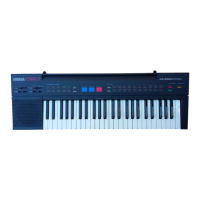
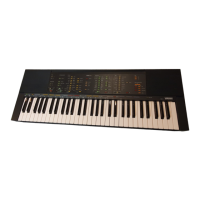
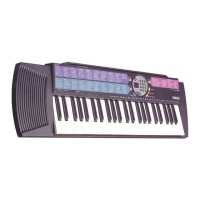
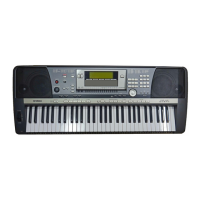

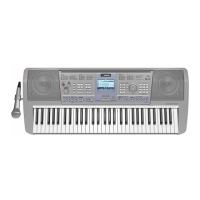
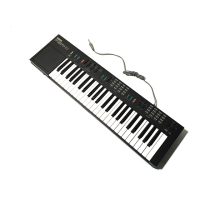
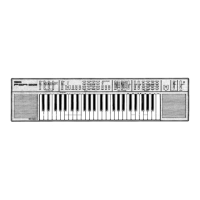
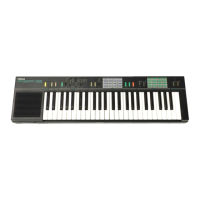



